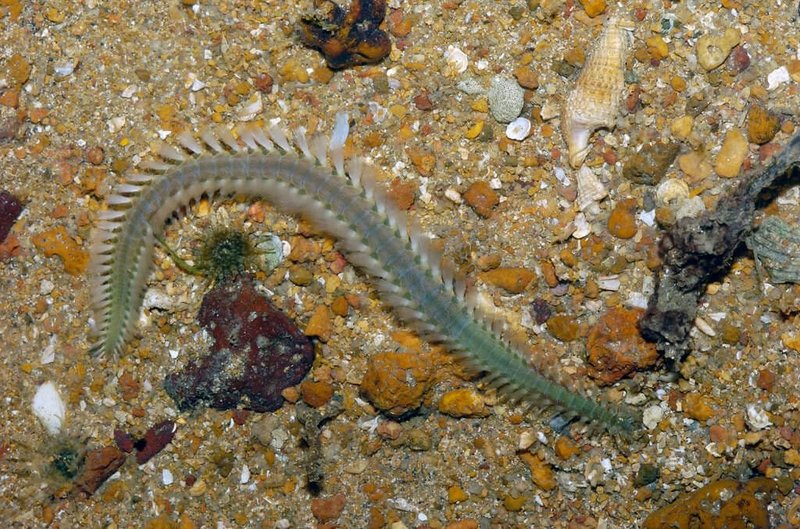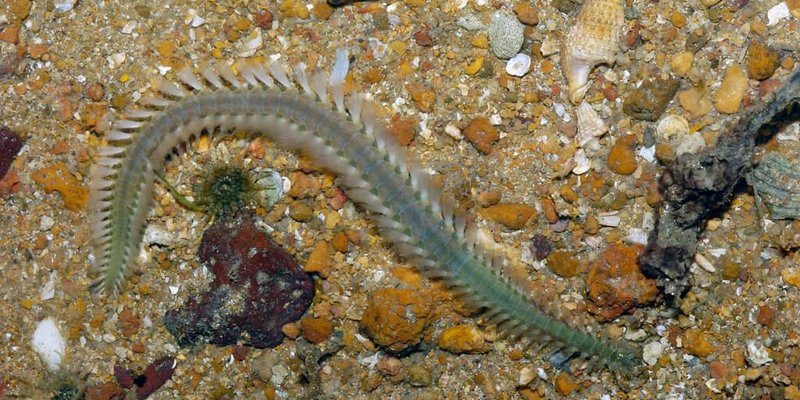
You might be wondering, “Are these worms mainly scavengers, or do they take on the role of predators?” Well, the answer isn’t as black and white as you might think. Bristle worms have a varied diet that allows them to adapt to different environments and food sources. You could say they’re fascinating little creatures, straddling the line between scavenger and predator, and today, we’re going to explore that intriguing diet.
What Are Bristle Worms?
Bristle worms are marine annelids, belonging to the class Polychaeta. You’ll often find them in oceanic environments, from tidal pools to deep-sea regions. Most of them have a long, segmented body covered in bristles or setae, which help them move through the water and sediment. These little worms can vary in size, with some being just a few centimeters long while others might stretch over a meter!
You might encounter quite a few species, such as *Lumbricus*, known for being quite the scavenger, or *Eunice*, which is a bit more predatory. Their diverse habitats and considerable adaptability make them successful in various ecological niches. But their diet? That’s what really sets them apart.
The Scavenger Side of Bristle Worms
When it comes to scavenging, bristle worms are top-notch! They thrive on decaying organic matter. Picture this: after a big marine feast—like a whale carcass or a pile of dead fish—these worms swoop in, cleaning up the mess. This helps maintain a healthy ecosystem. They feast on particles like algae, detritus, and bits of decaying plant or animal matter.
Bristle worms have specialized mouthparts called jaws, allowing them to consume various organic materials. As they munch away, they break it down and release nutrients back into the environment, making them essential players in nutrient recycling. A bit like nature’s clean-up crew, right?
The Predator Aspect of Bristle Worms
While bristle worms are great scavengers, they can also show their predatory side. Some species, like the Eunice bristle worm, are known for actively hunting smaller creatures, such as crustaceans and other worms. They’ll use their sharp jaws to grab and consume prey, making them fearsome in their own right.
The predatory behavior usually kicks in when food is scarce or there’s a chance to grab a quick meal. This dual role enables bristle worms to adapt to different environments and food availability. Think of them like opportunists in a buffet line—always ready to make the most of what’s available.
The Dietary Needs of Bristle Worms
Understanding what bristle worms eat can help in keeping them healthy, especially if you’re considering housing them in an aquarium. They can be fed varied diets that include high-quality fish food, algae, and even some live foods. A balanced diet ensures they thrive and contribute positively to the overall ecosystem of the aquarium.
Here’s a quick look at some of their favorite foods:
- Leftover fish scraps
- Decaying plant materials
- Commercial fish pellets
- Live foods like brine shrimp
If you notice your bristle worms thriving, they’re likely getting the right mix of nourishment. A healthy diet allows them to exhibit both scavenging and predatory behaviors, depending on their environment and food sources.
Bristle Worms in the Ecosystem
Bristle worms play a vital role in marine ecosystems. Their scavenging helps to clean up debris and supports the nutrient cycle, indirectly benefiting other marine life. By consuming dead organic material, they prevent the build-up of waste that could harm the environment.
Moreover, their diet can influence the dynamics of predator-prey relationships in their habitats. When they exert predatory behavior, they can help control populations of smaller creatures. In this way, they contribute to maintaining a balanced ecosystem. You could say they’re like the unsung heroes of the ocean floor!
Keeping Bristle Worms Healthy in Aquariums
If you’re keeping bristle worms in an aquarium, it’s crucial to replicate their natural diet as much as possible. Be sure to include both scavenged and fresh food sources. Regular feeding schedules can help maintain their health and ensure they exhibit their natural behaviors, whether they’re scavenging for leftovers or hunting.
Don’t forget to monitor water quality and tank conditions. These factors are just as important as their diet. Healthy bristle worms contribute to a thriving aquarium ecosystem. You might even find them becoming an engaging part of your underwater community!
Bristle worms are a fascinating mix of scavengers and predators, adapting their diet based on the needs of the ecosystem and food availability. Their ability to thrive in various environments makes them unique and essential to marine life. Whether they’re tidying up the ocean floor or hunting for their next meal, they show us the importance of each creature in the intricate web of life.
So, the next time you hear about bristle worms, remember they’re not just slimy creatures lurking in the shadows. They’re a crucial part of the ocean’s balance, living in a world governed by both survival and sustenance. Embrace the complexity—they’re more than meets the eye!

